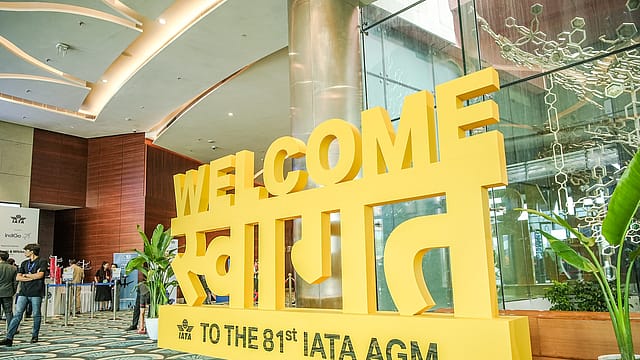Aircraft makers continue to let their airline customers down: IATA Director General
ADVERTISEMENT

Aircraft manufacturers continue to let their airline customers down and every airline is frustrated that these problems have persisted so long, Willie Walsh, IATA’s Director General, said at the International Air Transport Association (IATA) Annual General Meeting 2025.
“And indications that it could take until the end of the decade to fix them are off-the-chart unacceptable!” Walsh said.
The aircraft backlog exceeds 17,000 (sharply up from the 10,000-11,000 pre-pandemic), with an implied wait time of 14 years, according to the global airline industry body.
In 2025, 1,692 aircraft are expected to be delivered. Although this would mark the highest level since 2018, it is almost 26% lower than year-ago estimates. Further downward revisions are likely, given that supply chain issues are expected to persist in 2025 and possibly to the end of the decade, IATA noted.
Should states exit from a multilateral agreement exempting aircraft from tariffs, supply chain constraints and production limitations could be further aggravated, warned IATA.
According to IATA estimates, supply chain issues have had significant negative impacts on airlines: driving-up leasing costs, increasing the average fleet age to 15 years (from 13 in 2015), cutting the fleet replacement rate to half the 5-6% of 2020, and reducing the efficiency of fleet utilisation (using larger aircraft than needed on some routes).
January 2026
Netflix, which has been in India for a decade, has successfully struck a balance between high-class premium content and pricing that attracts a range of customers. Find out how the U.S. streaming giant evolved in India, plus an exclusive interview with CEO Ted Sarandos. Also read about the Best Investments for 2026, and how rising growth and easing inflation will come in handy for finance minister Nirmala Sitharaman as she prepares Budget 2026.
Earlier this year, Air India CEO Campbell Wilson warned that the global aircraft shortage will continue for the next four to five years. The supply of narrowbody jet engines, business and first class seats, and some elements of aircraft fuselages, will see some pinch points, Wilson said at an event organised by travel news website Skift.
Engine problems and a shortage of spare parts exacerbate the situation and have caused record-high groundings of certain aircraft types, according to IATA. The number of aircraft younger than 10 years in storage is currently more than 1,100, constituting 3.8% of the total fleet compared with 1.3% between 2015 and 2018, IATA said. Nearly 70% of these grounded aircraft are equipped with PW1000G engines.
IATA said the airline industry’s financial outlook for 2025 is showing improved profitability over 2024 and resilience in the face of global economic and political shifts. “The first half of 2025 has brought significant uncertainties to global markets. Nonetheless, by many measures including net profits, it will still be a better year for airlines than 2024, although slightly below our previous projections. The biggest positive driver is the price of jet fuel which has fallen 13% compared with 2024 and 1% below previous estimates. Moreover, we anticipate airlines flying more people and more cargo in 2025 than they did in 2024, even if previous demand projections have been dented by trade tensions and falls in consumer confidence. The result is an improvement of net margins from 3.4% in 2024 to 3.7% in 2025. That’s still about half the average profitability across all industries. But considering the headwinds, it’s a strong result that demonstrates the resilience that airlines have worked hard to fortify,” said Walsh.
“Perspective is critical to put into context such large industry-wide aggregate figures. Earning a $36 billion profit is significant. But that equates to just $7.20 per passenger per segment. It’s still a thin buffer and any new tax, increase in airport or navigation charge, demand shock or costly regulation will quickly put the industry’s resilience to the test. Policymakers who rely on airlines as the core of a value chain that employs 86.5 million people and supports 3.9% of global economic activity, must keep this clearly in focus,” said Walsh.
Efficiency is another significant driver of the outlook. Passenger load factors are expected to reach an all-time high in 2025 with a full-year average of 84.0%, as fleet expansion and modernisation remains challenging amid supply chain failures in the aerospace sector.
Overall, total revenues are expected to grow by 1.3%, outpacing a 1.0% increase in total expenses, shoring up industry profitability. Industry revenues are expected to reach a historic high of $979 billion in 2025, according to IATA estimates. Passenger revenues are expected to reach $693 billion in 2025 (+1.6% on 2024), an all-time high.
Jet fuel is expected to average $86 per barrel in 2025 (well below the $99 average in 2024), translating into a total fuel bill of $236 billion, accounting for 25.8% of all operating costs. This is $25 billion lower than the $261 billion in 2024.
